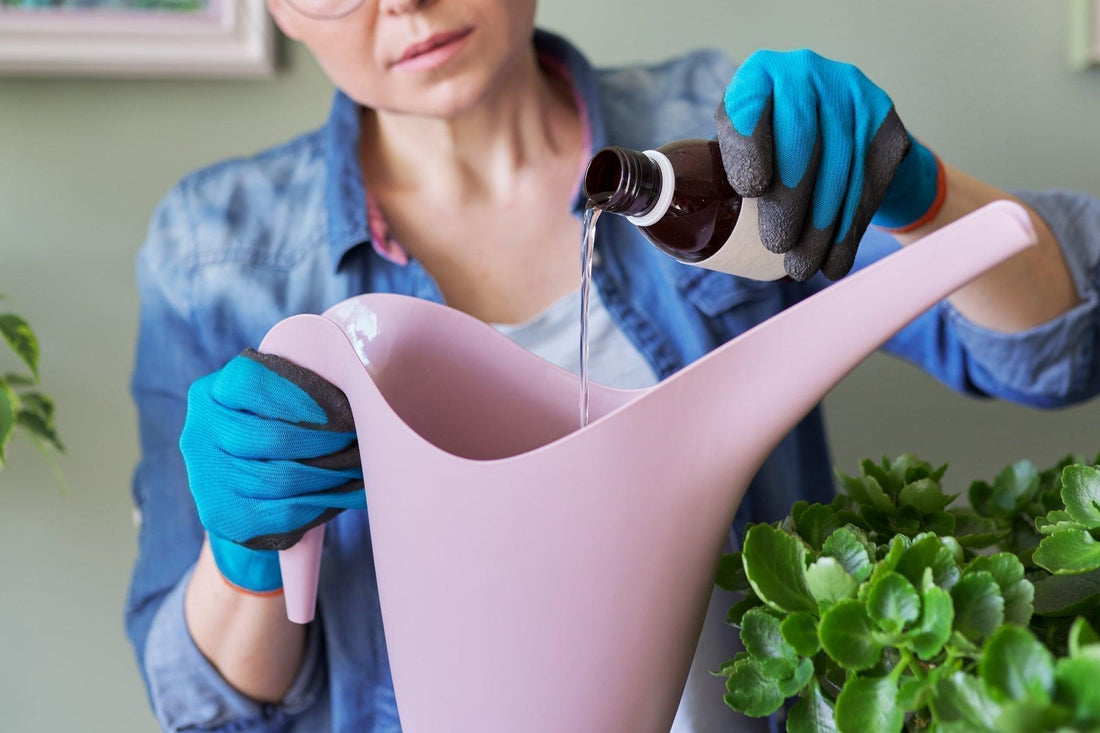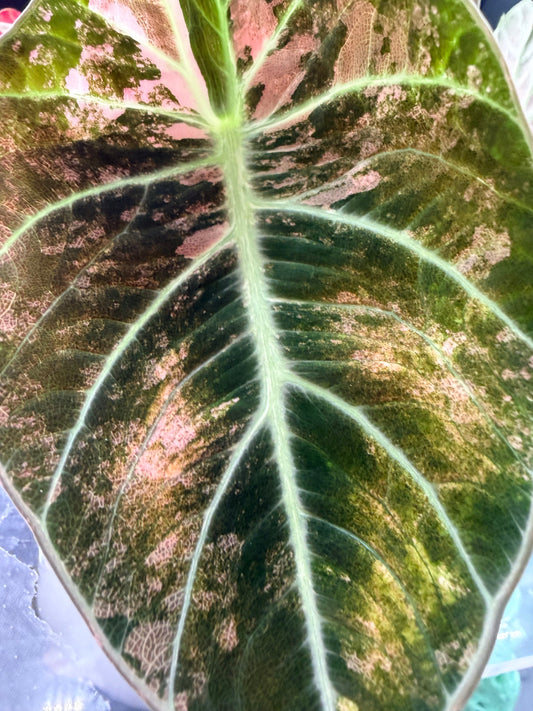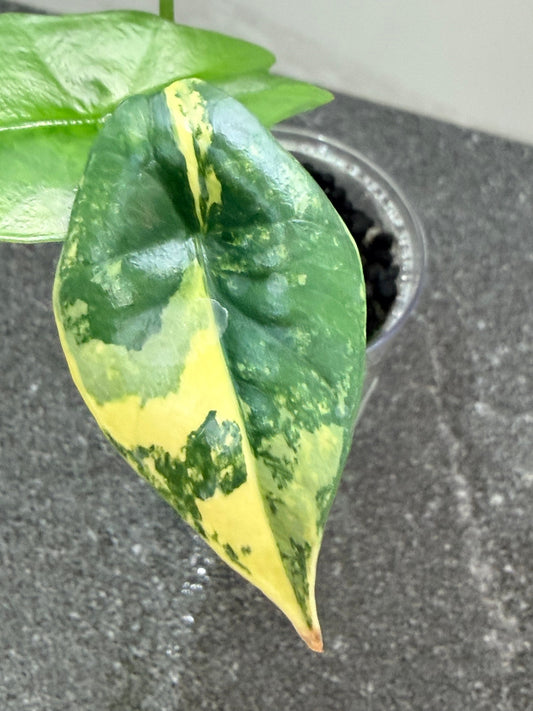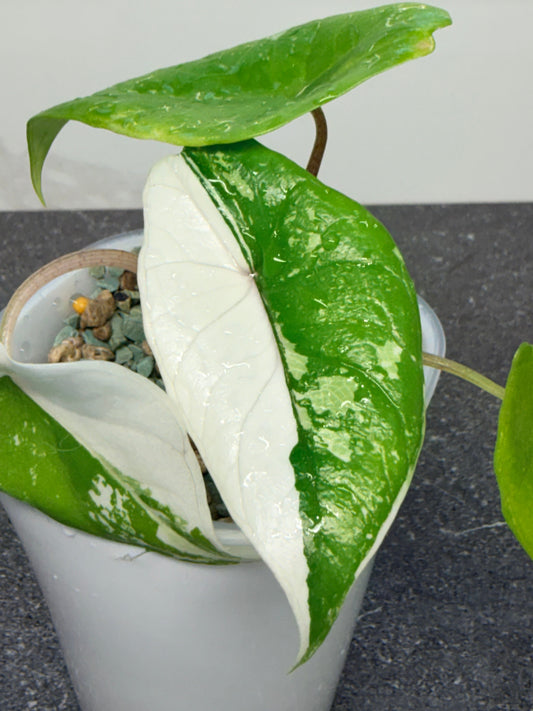
Caring For Your Alocasia | Pest Patrol
Share
Pest Patrol: The Ultimate Guide to Protecting Your Alocasia Plants from Common Pests
Identify, treat, and prevent pests naturally and effectively with our expert guide 🌿
🐛 Why Pest Control is Crucial for Alocasia Plants
Alocasias are stunning plants known for their striking foliage — but they're also magnets for certain pests. Spider mites, aphids, and mealybugs are among the most common threats. Ignoring pest problems can lead to:
- Yellowing or dropping leaves
- Stunted growth
- Severe infestations that can destroy your plant
Proactive care and early intervention are essential for keeping your Alocasias vibrant and thriving.
🕷️ How to Identify Common Alocasia Pests
Spider Mites
Appearance: Tiny red or brown dots, often invisible without magnification.
Signs: Fine webbing under leaves, speckled or yellowing foliage.
Conditions they love: Dry, dusty environments.
Aphids
Appearance: Small, pear-shaped insects, green, black, or brown in color.
Signs: Sticky residue (honeydew) on leaves, curling or deformed new growth.
Conditions they love: Fresh, tender growth points.
Mealybugs
Appearance: White, cottony masses around leaf joints and under leaves.
Signs: Yellowed leaves, slowed plant growth, sticky residues.
Conditions they love: Warm, humid environments with stagnant air.
Tip: Always inspect the underside of leaves and new growth tips — pests love hiding there!
🛡️ How to Treat Pests on Alocasia Plants
Step 1: Isolate the Plant
Move the infested Alocasia away from healthy plants. This prevents pests from spreading across your collection.
Step 2: Manual Removal
Wipe pests off gently using a soft cloth or cotton swab dipped in diluted dish soap. Focus especially under leaves and around stems.
Step 3: Apply Natural Remedies
- Neem oil spray: Effective against spider mites, aphids, and mealybugs.
- Insecticidal soap: Breaks down soft-bodied pests naturally.
- Horticultural oils: Suffocate pests without harming the plant.
✅ Consistency is key: Reapply treatments every 5–7 days until pests are fully gone.
Step 4: Increase Humidity
Spider mites thrive in dry air. Using a humidity tray or room humidifier can help deter future mite infestations.
🌱 Preventing Future Pest Problems
- Inspect plants weekly: Check under leaves and around stems.
- Clean leaves regularly: Dust-free leaves discourage pest buildup.
- Quarantine new plants: Always isolate new arrivals for 2–3 weeks before placing them near your collection.
- Optimise airflow: Use small fans to prevent stagnant, pest-friendly air.
- Feed your plants: Healthy, well-fed plants are naturally more pest-resistant.
Bonus Tip: Adding natural predators like ladybugs (outdoors) can help control minor pest populations!
🌟 Recommended Products for Alocasia Pest Care
- Neem Oil Concentrate — trusted organic solution for soft-bodied insects.
- Horticultural Soap Spray — easy to use, effective on spider mites and aphids.
- Moisture Trays — to increase ambient humidity naturally.
👉 Shop Our Full Care Collection Here
📣 When to Call for Backup
If you've tried multiple treatments and pests persist, don't hesitate to:
- Contact The Alocasia Company Experts at sales@thealocasiacompany.co.uk
- Seek professional pest services if the infestation spreads to multiple plants quickly.
Sometimes pests are stubborn, but early intervention paired with professional guidance can save your precious collection.
🌱 Final Thoughts: Stay Calm and Patrol On!
Pest issues are part of the plant journey — but they don't have to be disastrous. With careful observation, quick action, and consistent care, your Alocasia plants can stay healthy, lush, and free from unwelcome invaders.
🌱 Remember: At The Alocasia Company, we're always here to support you on your plant parent journey.
Explore Plant Care Products



